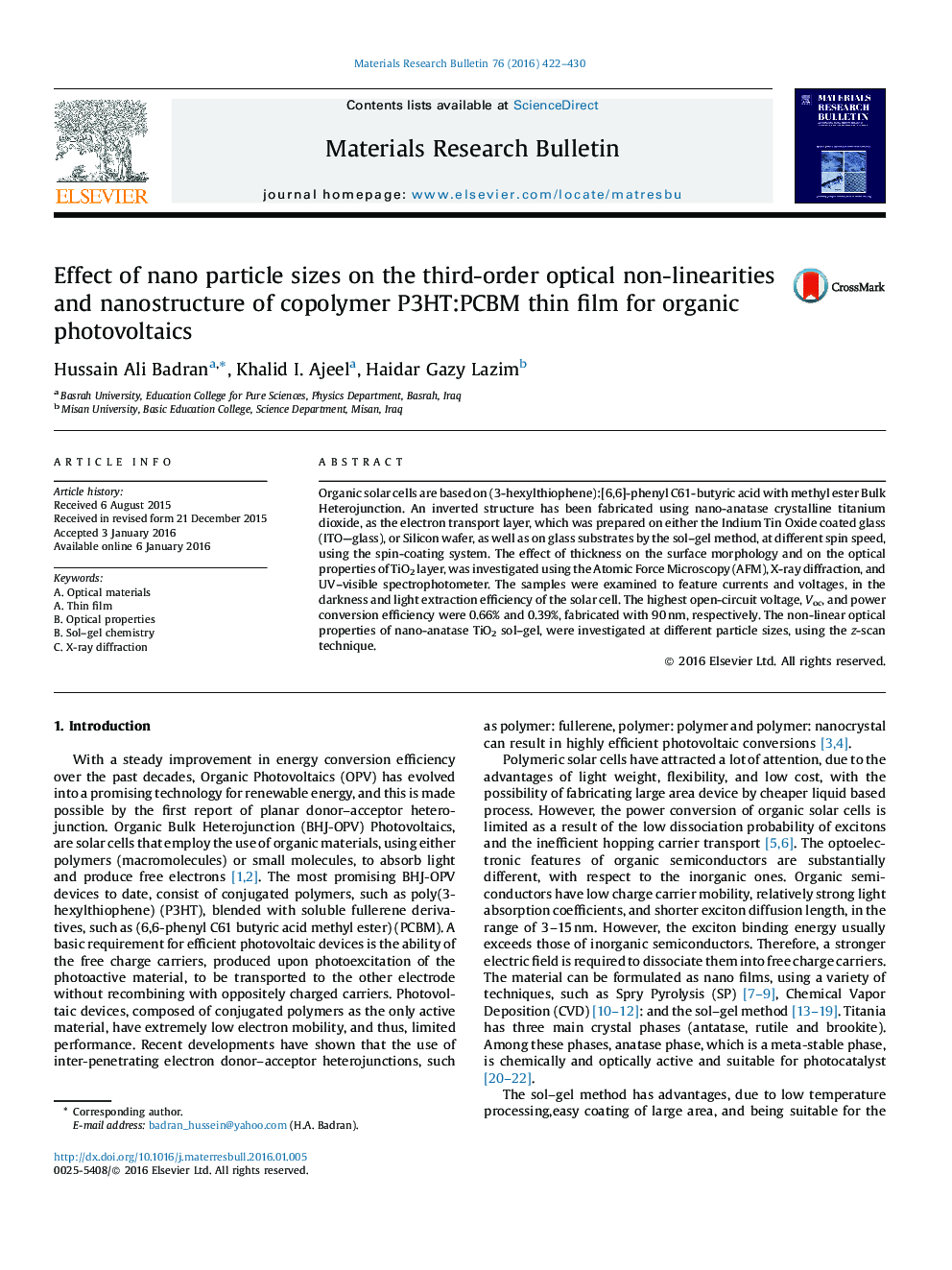| Article ID | Journal | Published Year | Pages | File Type |
|---|---|---|---|---|
| 1487409 | Materials Research Bulletin | 2016 | 9 Pages |
•Active layer (P3HT:PCBM) has been deposited on substrate type by spin coating at 1000 rpm.•The device was completed by evaporating a 60 nm thick, circular gold electrodes onto the P3HT:PCBM.•Nonlinear refractive indices of the three particle sizes are found to be of the order of 10−7 cm2/W
Organic solar cells are based on (3-hexylthiophene):[6,6]-phenyl C61-butyric acid with methyl ester Bulk Heterojunction. An inverted structure has been fabricated using nano-anatase crystalline titanium dioxide, as the electron transport layer, which was prepared on either the Indium Tin Oxide coated glass (ITO—glass), or Silicon wafer, as well as on glass substrates by the sol–gel method, at different spin speed, using the spin-coating system. The effect of thickness on the surface morphology and on the optical properties of TiO2 layer, was investigated using the Atomic Force Microscopy (AFM), X-ray diffraction, and UV–visible spectrophotometer. The samples were examined to feature currents and voltages, in the darkness and light extraction efficiency of the solar cell. The highest open-circuit voltage, Voc, and power conversion efficiency were 0.66% and 0.39%, fabricated with 90 nm, respectively. The non-linear optical properties of nano-anatase TiO2 sol–gel, were investigated at different particle sizes, using the z-scan technique.
Graphical abstractFigure optionsDownload full-size imageDownload as PowerPoint slide
